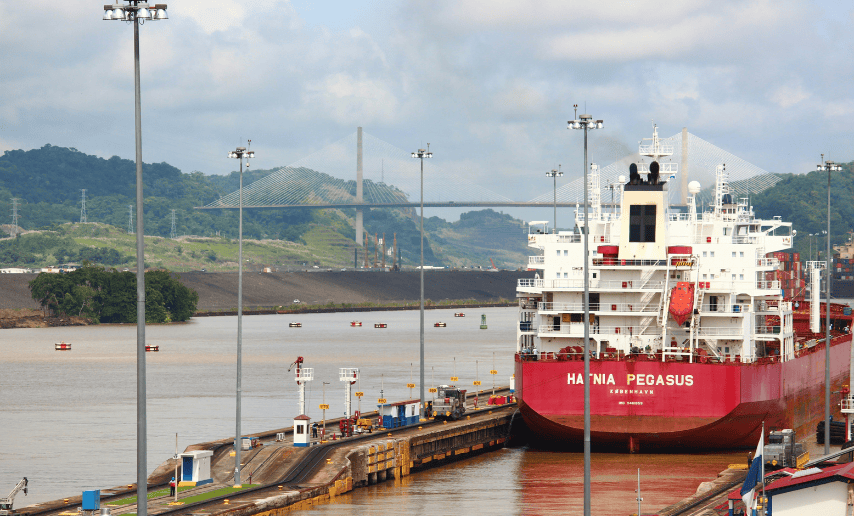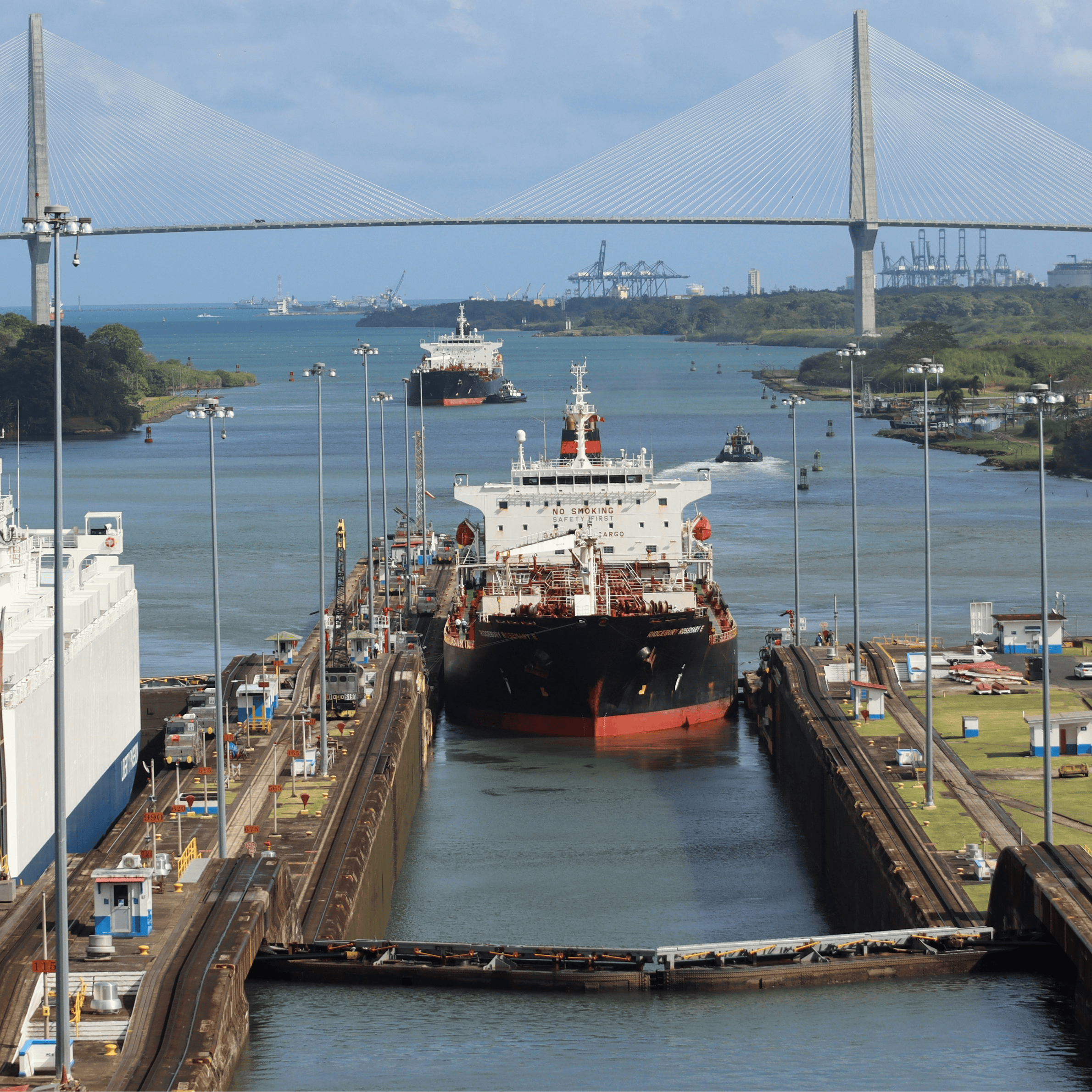
The Panama Canal
The Panama Canal, a 51-mile waterway connecting the Atlantic and Pacific Oceans, is considered the most vital piece of infrastructure for the transport of international trade in the Western Hemisphere.
This trans-oceanic corridor, which reduces vessel travel time between New York and San Francisco by more than half, supports six percent of global maritime trade as a primary route connecting North Asia and the East and Gulf Coasts of the United States. In 2003 alone, 14,000 vessels transited the Panama Canal, carrying more than 500 million tons of cargo.
The Panama Canal’s lock system is reliant on water from the Chagres River, which is stored in two manmade lakes: Gatun and Alajuela. Water from the lakes fills a series of locks that lift ships 85 feet above sea level to Gatun Lake and lowers them on the other side, allowing vessels to move freely between the Atlantic Ocean and the Pacific Ocean.
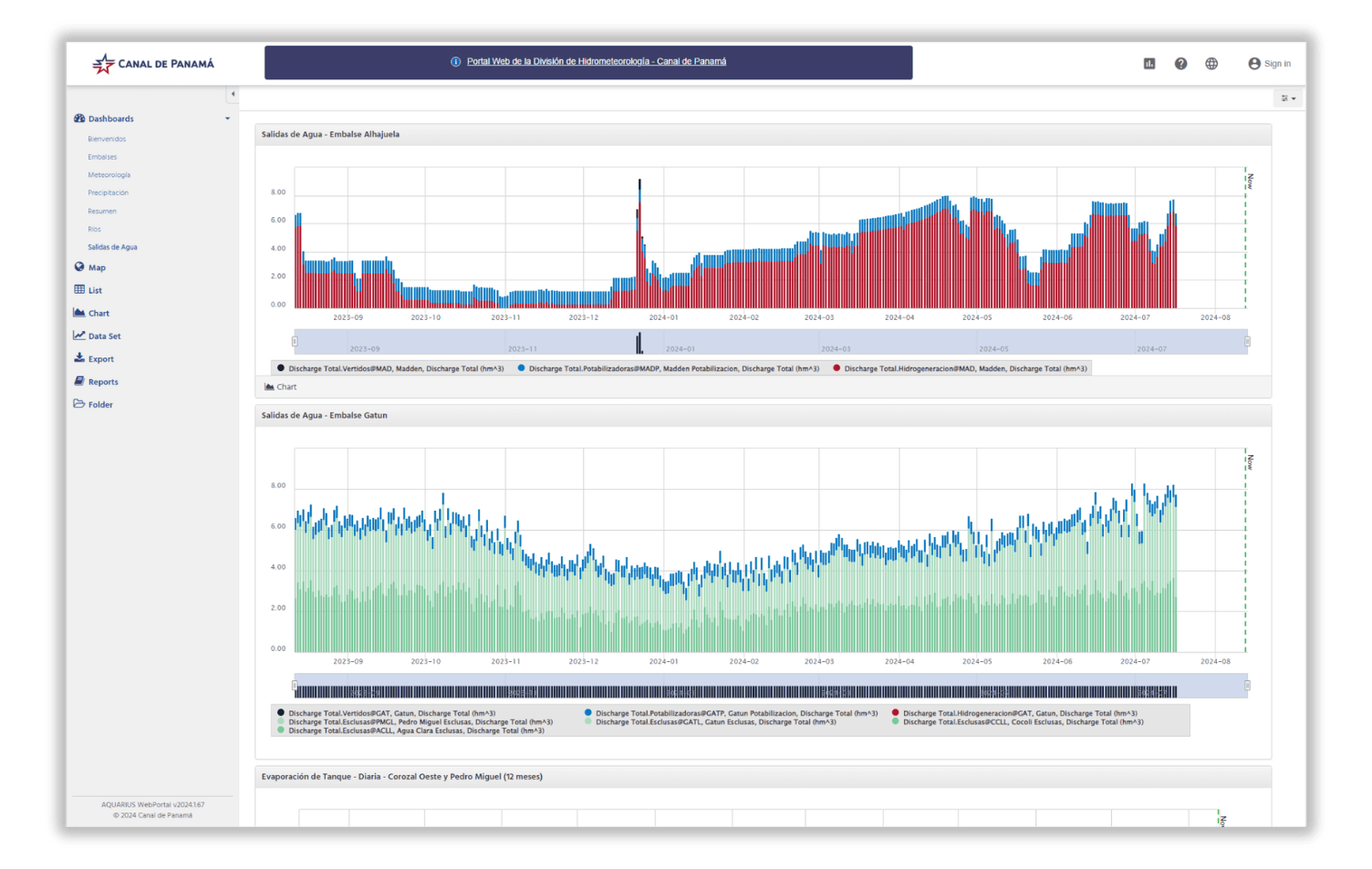
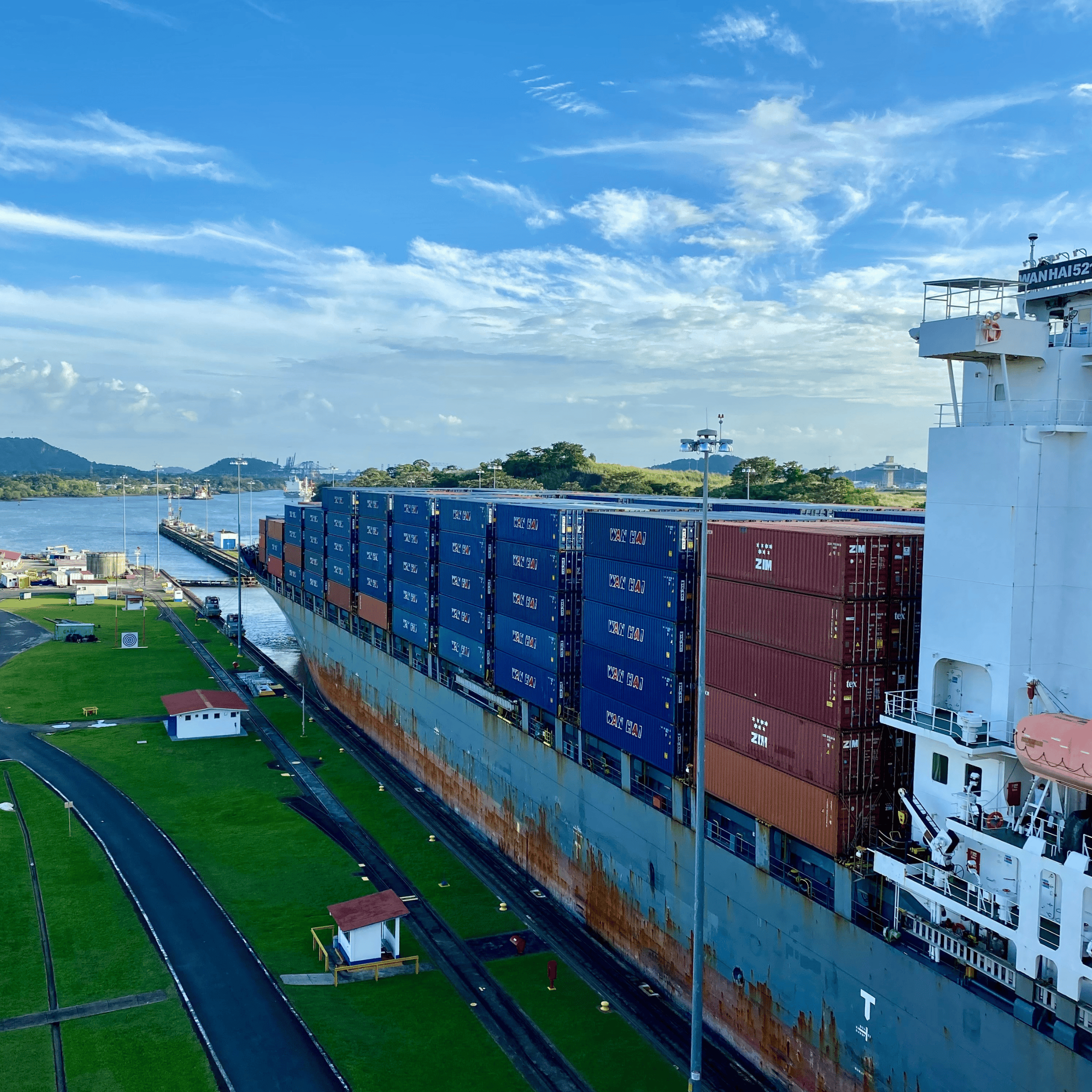
Managing the water levels in Gatun and Alajuela Lakes is critical to the Panama Canal’s function with a single vessel transit using 52,000,000 gallons of fresh water and an average of 36 ships transiting the Canal per day. Maintaining sufficient water levels is also critical for the 2.5 million residents of Panama City and Colón who depend on water from the Chagres River for their drinking water and municipal wastewater treatment. Hydropower is generated in Gatun & Alhajuela, mostly for internal Canal operations.
The balancing act of maintaining optimal lake levels is carried out by the Panama Canal Authority (PCA). The agency accomplishes this by collecting and leveraging vast amounts of data, which is used for hydrological modeling and forecasting, to support strategies to economize the use of a finite resource.
Fifty-five scientific stations scattered across the watersheds collect information related to precipitation, water temperature, wind speeds, dewpoint, humidity, tides, water levels, and runoff. The PCA consolidates this raw data, along with S-band weather radar information in Aquarius, a software platform, that acquires, organizes, models, and assures data quality before publishing in real-time.
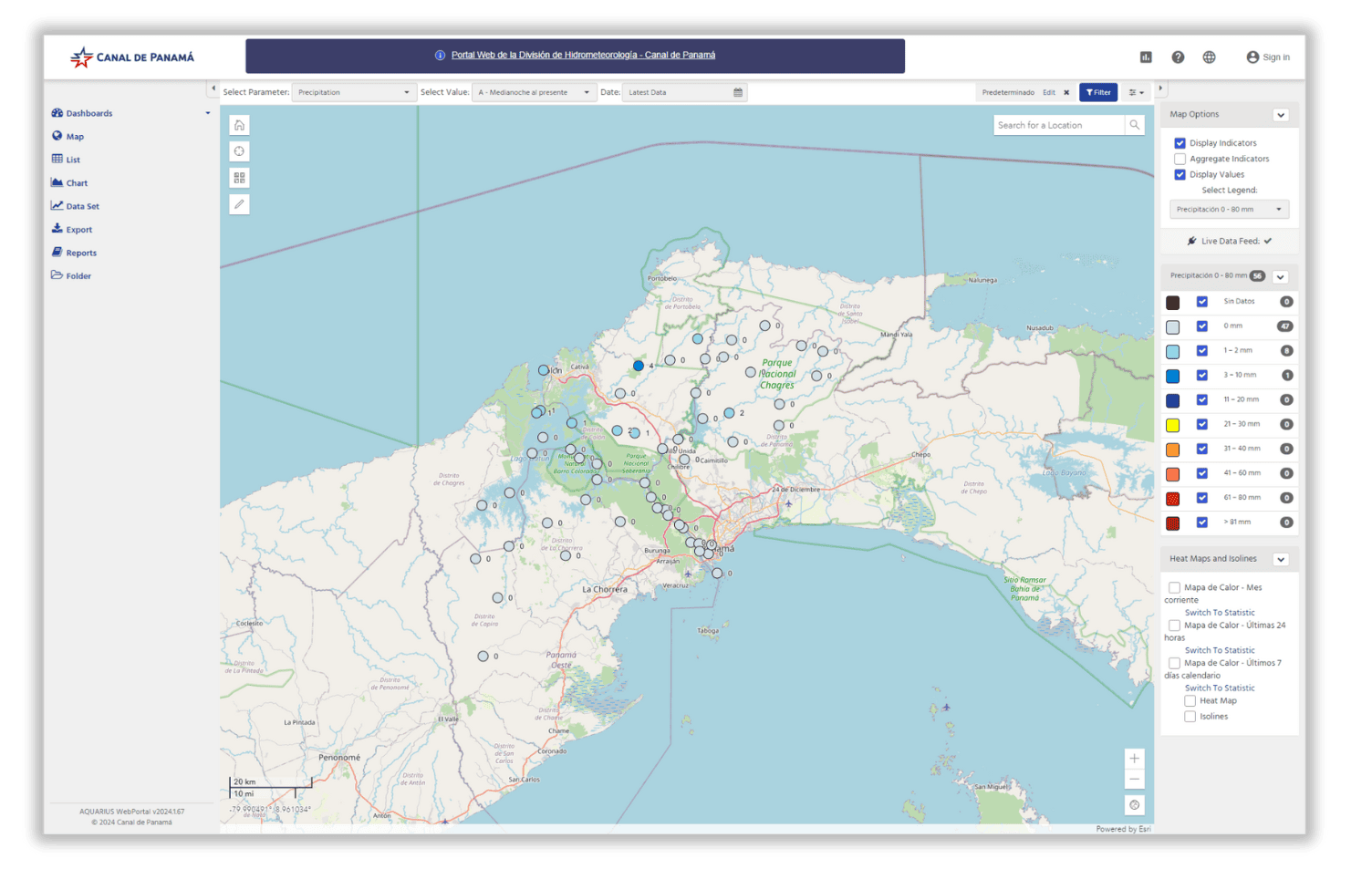
Using Hydrological Data to Influence Canal Traffic
Members of PCA’s Operations Vice Presidency access data from the platform to determine transit charges, based on variable daily lake levels. When water levels are high, transit charges are lower to incentivize shipping companies to plan travel through the canal during times of abundant water supply. When lakes are lower, transit charges are considerably higher. PCA calculates these tariff values as well as draft restrictions with the hydrological data organized and managed in Aquarius.
The software is designed to automate workflows by extracting data, turning it into meaningful information, and making it available to stakeholders that require it to do their job. PCA’s Hydrometeorology Division uses the sensor data to conduct predictive analytics and meteorological forecasting to identify weather patterns in advance and determine long-term strategies so that the agency can make the most strategic, efficient use of the water resources as possible. The platform allows meteorologists to compare current data and numerical models with historical and analog data, which has elevated the accuracy of their forecasts.
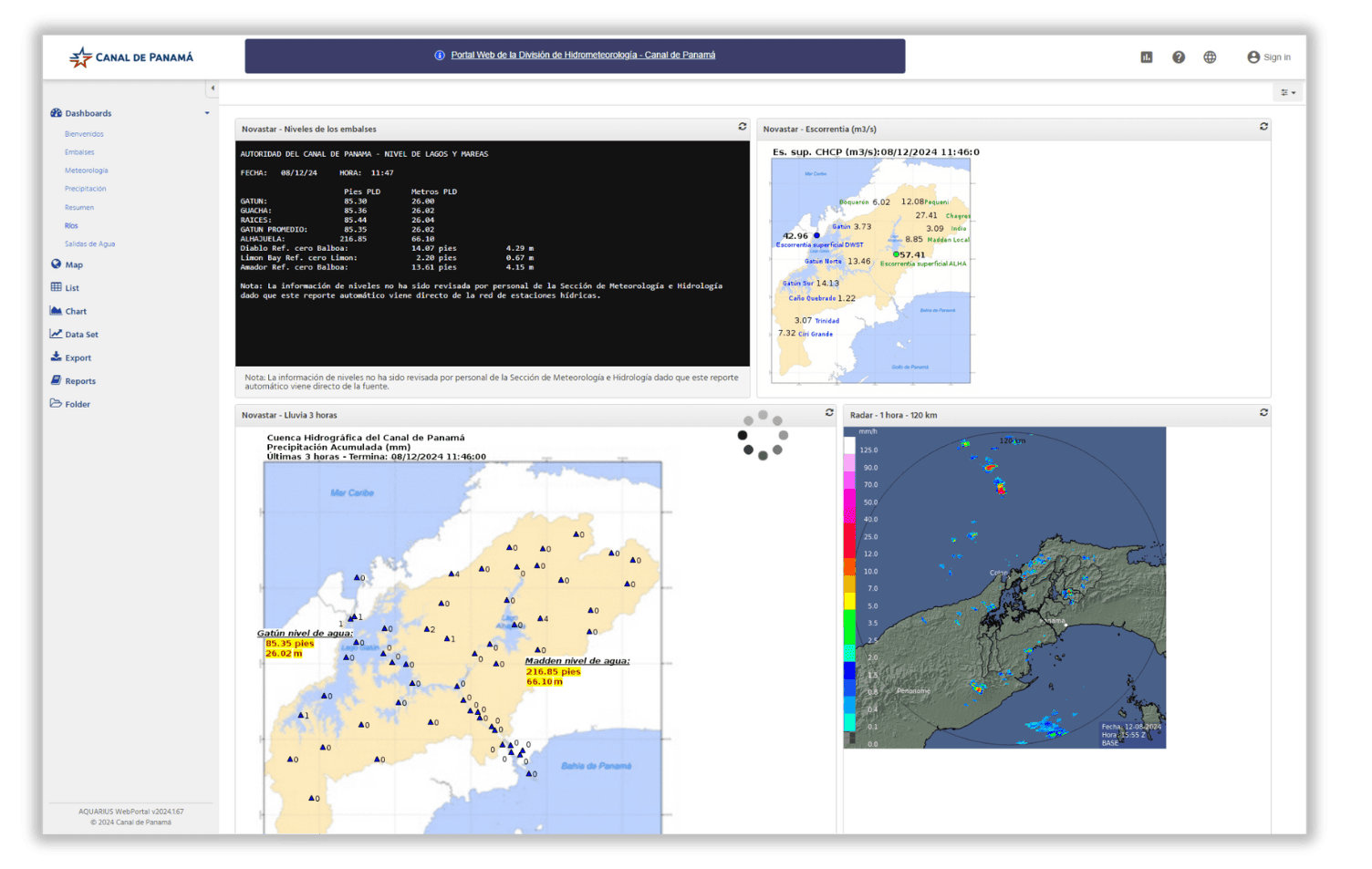
Secure, Accessible Quality Data Serves the Greater Community
In the past, PCA had to gather and send data files manually to individual teams and outside agencies. The new platform provides a centralized, open-hub format via a web portal, making information easily accessible to all stakeholders as well as the public. With organized data and open access, PCA is able to work more efficiently since team members from across the organization can utilize any information that they might need.
Sensor data is automatically uploaded into the system with minimal manual intervention, so operators can have greater confidence in the data integrity. Automated error detections and intuitive correction tools allow PCA to compare current and historical data. PCA can make any corrections for quality assurance, with changes precisely annotated within the software system.
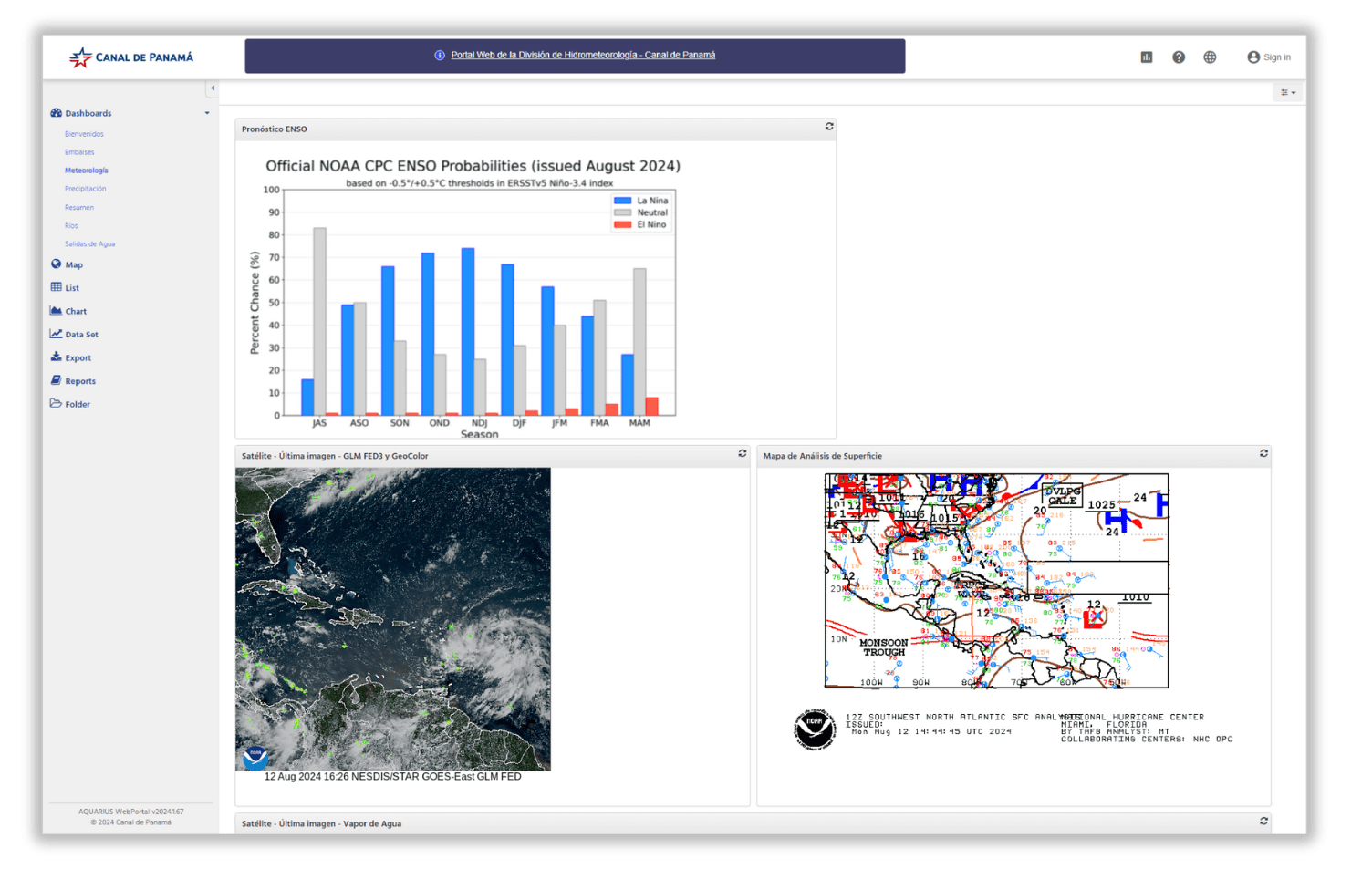
PCAs web portal provides up-to-date information and high integrity data so that professionals across the organization and beyond can make the best use of it. The web portal is customizable so PCA can display information in charts, graphs, maps, meters and timelines making it easy for users to zero in on the information they are looking for.The Panama Canal’s hydrological data has impacts that extend far beyond the lock gates and local communities.
When, for example, trade through the waterway is limited due to low water levels, transportation delays can result in shifts across the global economy–from elevating transport costs and affecting the availability of products worldwide to increasing the cost of groceries at your neighborhood market. Using the Aquarius platform to manage data, PCA is able to streamline transportation costs and the flow of goods around the world, while also ensuring the people of Panama have the water they need.
